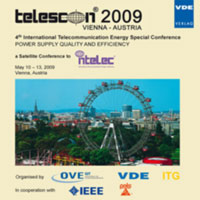A Study of High Voltage Converter Topologies with Wide Input Voltage Range
Konferenz: telescon(R) 2009 - Power Supply Quality and Efficiency - 4th International Telecommunication - Energy special conference
10.05.2009 - 13.05.2009 in Vienna, Austria
Tagungsband: telescon(R) 2009 - Power Supply Quality and Efficiency
Seiten: 8Sprache: EnglischTyp: PDF
Persönliche VDE-Mitglieder erhalten auf diesen Artikel 10% Rabatt
Autoren:
Osuga, Hiroyuki (Mitsubishi Electric Corporation, Kamakura Works, 325 Kamimachiya, Kamakura, 247-8520, Japan)
Terukina, Isamu (Engineering Department, Kamakura Engineering Office, Mitsubishi Electric Engineering Company Limited, 730 Kamimachiya, Kamakura, 247-0065, Japan)
Nagano, Hiroshi (Japan Aerospace Exploration Agency, 2-1-1 Sengen Tsukuba, 305-8505, Japan)
Inhalt:
The Power Processing Control Unit (PPCU) is one of the components of the power supply system, and it consists of eight power supplies for a beam converter, an accelerator converter, a discharge converter, two hollow-cathode keeper converters, two hollow cathode heater converters, and an auxiliary converter. The beam converter output voltage level is less than +1100V and the accelerator converter output voltage level is more than -550V. The PPCU is required to achieve high power efficiency with wide input voltage range (32.5V to 50V) as well as to minimize volume, to reduce weight and to suppress the electromagnetic interference. The power efficiency target of the high voltage converter is more than 90% for nominal 500W at input voltage between 32.5V to 50 V.The PPCU bread-board model (BBM) consisting of the high voltage converter (a beam converter and an accelerator converter) was manufactured for the ion engine system. We examined the power converter topologies to solve the issue of achieving light weight and high power efficiency. We selected the inductor-fed phase shift converter and the vector combined voltage resonant converter. These two kinds of power converter were tested in order to evaluate the converter performance, especially power efficiency. The results show that the power efficiency of the vector combined voltage resonant converter is better than the inductor-fed phase shift converter. The power efficiency is more than 90.7%, and so we select the vector combined voltage resonant converter of high voltage converter topologies.


